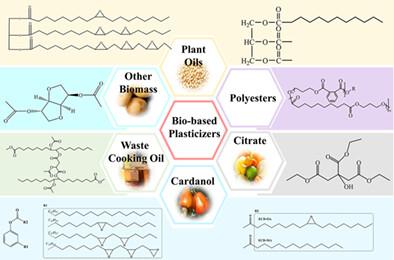Development of biobased plasticizers with synergistic effects of plasticization, thermal stabilization, and migration resistance: A review
Abstract
Plasticizers are widely used in poly(vinyl chloride) (PVC), polylactic acid (PLA), thermoplastic starch (TPS), and other modified powder materials to enhance the flowability, flexibility, and processability of macromolecules. Because of the reprotoxicity of phthalates in animals and humans, certain phthalates have recently been banned in the United States and Europe. Biobased plasticizers from green biomass–derived renewable resources with low toxicity are expected to be a substitute for phthalates. Among a variety of newly developed biobased monomers, cardanol, and isosorbide are the two most promising materials because of their unique structural features. This review summarizes the research progress of cardanol- and isosorbide-based plasticizers with synergistic effects of plasticization, thermal stabilization, and anti-migration. By summarizing and analyzing the relationship between molecular structure of plasticizer and plasticizing performance, this review can provide theoretical guidance for future research on the design of isosorbide- and cardanol-based plasticizers.
Highlights
- Biobased plasticizers with low toxicity are expected to replace certain phthalates.
- The plasticizing effect of single biobased plasticizer is not good.
- Biobased plasticizer with synergistic effects is required.
- There exists the trade-off effect between the molecular weight and the compatibility.
- Epoxidized isosorbide ester can be used as a heat stabilizer.


 求助内容:
求助内容: 应助结果提醒方式:
应助结果提醒方式:


